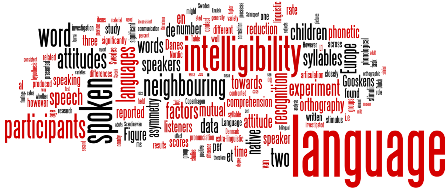
Mutual intelligibility
of closely related languages
MICReLa

Ongoing projects
An increasing number of higher education institutions in countries where English is not an official language are offering higher education programmes in English - sometimes parallel to similar programmes in the country’s official language(s), sometimes without a comparable alternative in the official language(s).
Offering courses and entire programmes using English-medium instruction (EMI) fosters transnational collaboration and inclusiveness. In line with this, Wilkinson (2013) reported that the transition from using Dutch as a medium of instruction (DMI) to English-medium instruction in the Netherlands was indeed mainly motivated by idealistic and educational motivations during the 1980s and 1990s. However, the development during the past 20 years appears to be have been driven by economic considerations mainly (Wilkinson 2013).
Little is known about the immediate, short-term, medium-term, and long-term costs and benefits of EMI for European societies in the 21st century, as empirical investigations of students’ academic achievements, language proficiency and preparation for the labour market are scarce. Being aware of costs and benefits of EMI in HE for society, however, is a prerequisite for developing sustainable HE language policies.
Our project aims at collecting some of these data by expanding the conventional approaches within this research field (discourse analysis, classroom observation) to using experimental designs and collecting offline as well as online data. This data contributes to revealing the effect of instruction language in HE on students’ academic achievements, Dutch and English academic language acquisition, and students’ preparation for the Dutch and the global labour market, respectively.
Crucially, some of the factors are intertwined: It may as well be the case that the students’ English proficiency generally increases through lectures given in English, but it is likely that this effect is weakened, neutralised, or even reversed when the English proficiency of the teacher is too low. Also, it can be assumed that the beneficial effect is linked to the students’ level of English in such a way that students with low proficiency fail to benefit from an English lecture, and that the benefit effect is less evident in students that have a very high English proficiency already. Not only English proficiency might be at stake, however, but also the transfer success of the content of the lectures is likely to depend on the language proficiency of the teachers and the students.
Subprojects of this project include investigations into the development of English and Dutch proficiency in students with a Dutch high-school diploma (vwo-eindexamen), investigations into lecturing styles in English and Dutch, as well as a study of the level of English and Dutch which is requested by employers in the Netherlands.
In a first sub-project, we explored how native Dutch-speaking university teachers lecture in both languages. We found that a specific message took longer to be transferred in EMI than in DMI, that lecturers made more and longer pauses, used a smaller vocabulary size and a smaller pitch range in EMI than in DMI.
Finished projects